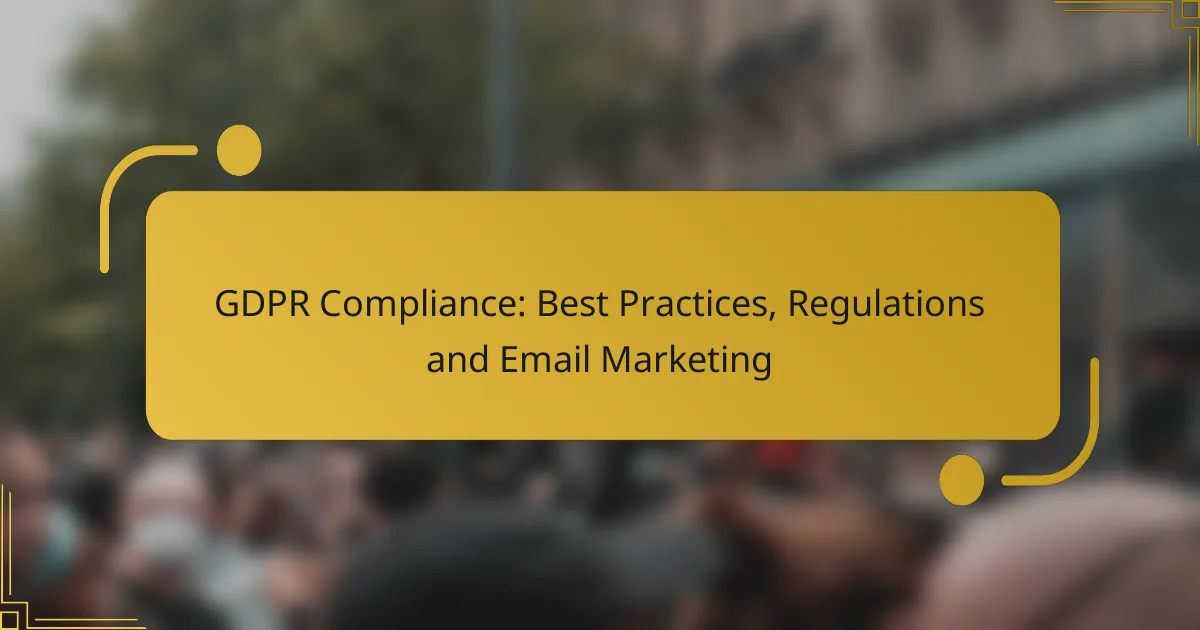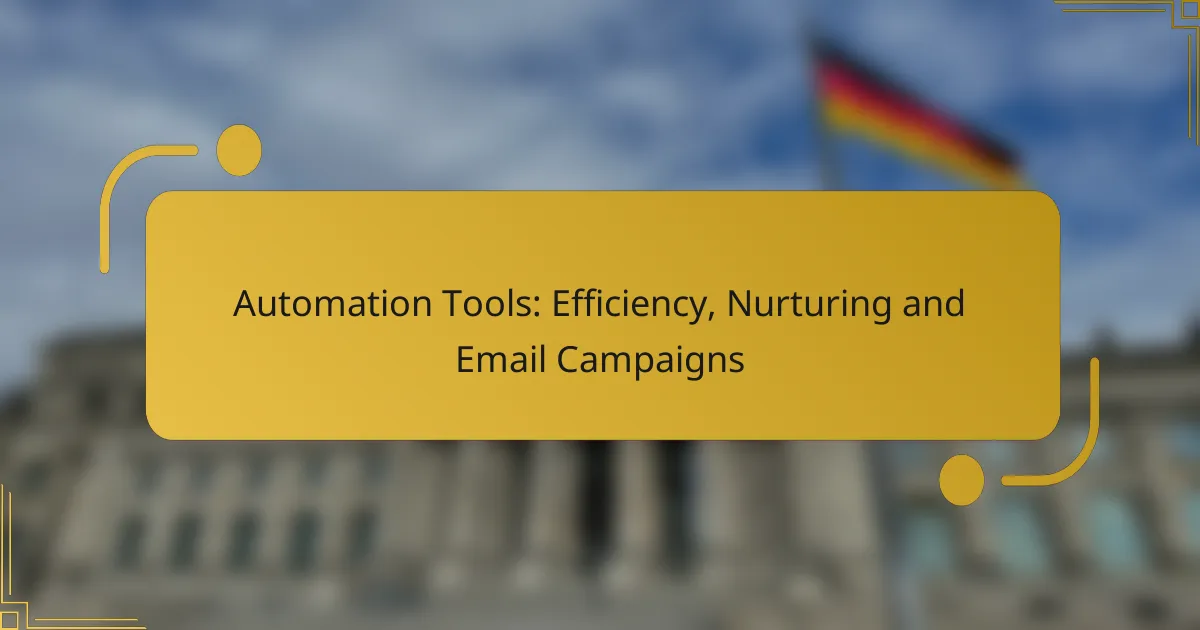GDPR compliance is crucial for email marketing, as it enforces strict guidelines on data privacy, user consent, and transparency. Businesses must prioritize obtaining explicit consent and providing clear privacy notices to build trust with subscribers while adhering to regulations. Implementing robust data protection measures not only ensures compliance but also enhances the overall effectiveness of marketing strategies.
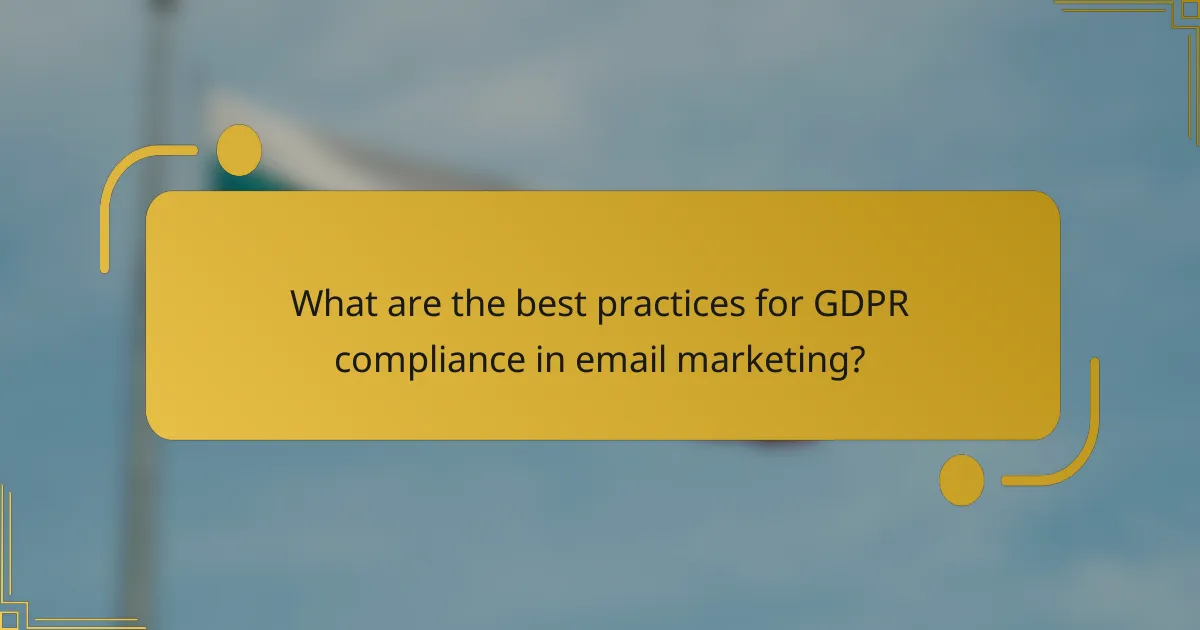
What are the best practices for GDPR compliance in email marketing?
To ensure GDPR compliance in email marketing, businesses must prioritize obtaining explicit consent, providing clear privacy notices, and implementing robust data protection measures. These practices not only help in adhering to regulations but also build trust with subscribers.
Obtain explicit consent from subscribers
Obtaining explicit consent means that subscribers must actively agree to receive marketing emails. This can be achieved through opt-in forms where users check a box to confirm their willingness to receive communications. Pre-checked boxes are not compliant.
It’s advisable to keep records of consent, including the date and method of acquisition. This documentation can be crucial in case of audits or disputes regarding compliance.
Provide clear privacy notices
Clear privacy notices inform subscribers about how their data will be used, stored, and shared. These notices should be easily accessible, ideally linked directly from the sign-up form.
Include information on the types of data collected, the purpose of data processing, and the rights of subscribers under GDPR. Transparency fosters trust and helps ensure compliance.
Implement data minimization strategies
Data minimization involves collecting only the information necessary for specific marketing purposes. Avoid gathering excessive data that is not essential for your email campaigns.
For example, if you only need an email address for newsletters, do not request additional personal information unless absolutely necessary. This reduces risk and simplifies compliance efforts.
Ensure data security measures
Implementing strong data security measures is critical for protecting subscriber information. Use encryption for data storage and transmission, and ensure that access to personal data is restricted to authorized personnel only.
Regularly update security protocols and conduct audits to identify vulnerabilities. This proactive approach helps mitigate risks associated with data breaches.
Regularly review and update policies
Regularly reviewing and updating your GDPR compliance policies is essential to adapt to any changes in regulations or business practices. Schedule periodic assessments to ensure that your email marketing strategies remain compliant.
Incorporate feedback from audits and subscriber inquiries to refine your practices. Staying informed about legal updates will help maintain compliance and protect your organization from potential penalties.

How does GDPR impact email marketing strategies?
The General Data Protection Regulation (GDPR) significantly affects email marketing strategies by enforcing strict rules on data privacy and user consent. Marketers must adapt their practices to ensure compliance, focusing on obtaining explicit consent from users and maintaining transparency about data usage.
Increased focus on user consent
Under GDPR, obtaining user consent is mandatory before sending marketing emails. This means businesses must ensure that subscribers actively opt-in, rather than relying on pre-checked boxes or implied consent. Clear and straightforward consent forms are essential.
For example, using double opt-in methods, where users confirm their subscription via email, can enhance compliance and build a more engaged audience. Marketers should regularly review their consent processes to ensure they meet GDPR standards.
Enhanced transparency requirements
GDPR mandates that businesses provide clear information about how personal data will be used. This includes detailing the purpose of data collection, the types of data collected, and how long the data will be retained. Transparency builds trust and can improve subscriber relationships.
Marketers should include privacy notices in their email communications, outlining data practices in simple language. Regular updates to privacy policies are also necessary to reflect any changes in data handling practices.
Stricter penalties for non-compliance
Non-compliance with GDPR can lead to severe penalties, including fines that can reach up to 4% of a company’s annual global revenue or €20 million, whichever is higher. This underscores the importance of adhering to GDPR guidelines in email marketing.
To avoid penalties, businesses should conduct regular audits of their email marketing practices, ensuring all aspects comply with GDPR. Training staff on data protection principles and implementing robust data management systems can also mitigate risks.
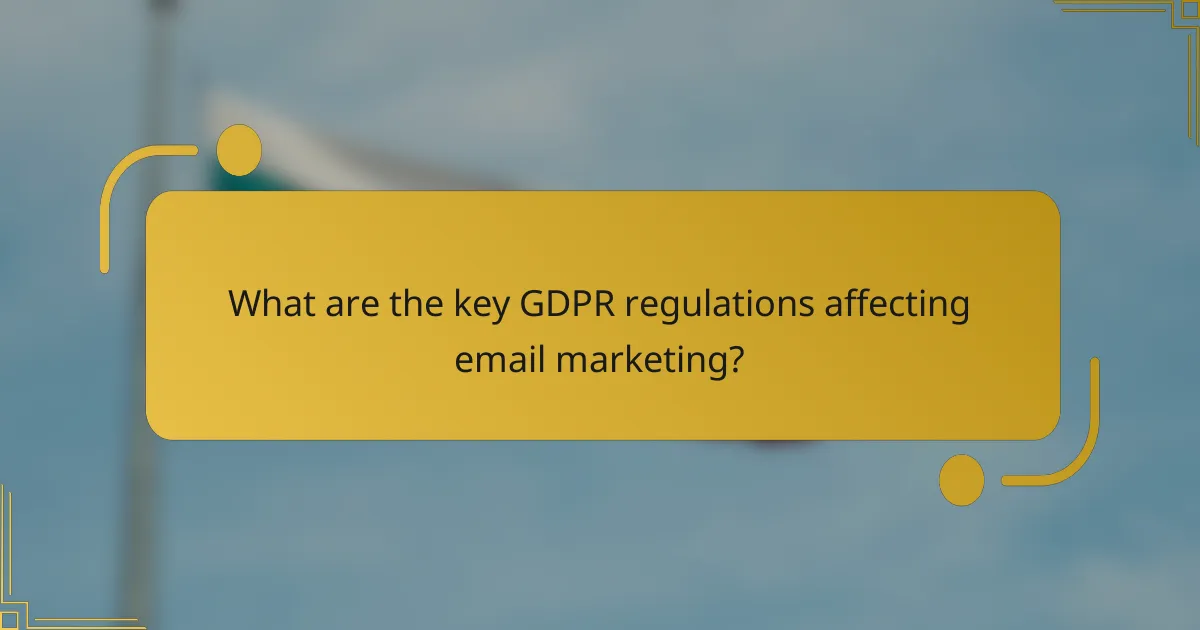
What are the key GDPR regulations affecting email marketing?
The General Data Protection Regulation (GDPR) significantly impacts email marketing by establishing strict guidelines for data processing, consent, and transparency. Marketers must adhere to these regulations to ensure compliance and protect consumer rights while effectively engaging their audience.
Article 6: Lawfulness of processing
Article 6 outlines the legal bases for processing personal data, which is crucial for email marketing. The most relevant bases include consent, contractual necessity, and legitimate interests. Marketers must determine which basis applies to their email campaigns and ensure that they can justify their data processing activities accordingly.
For instance, if using consent as the basis, businesses must obtain explicit permission from individuals before sending marketing emails. This means that pre-checked boxes or implied consent are not sufficient under GDPR.
Article 7: Conditions for consent
Article 7 specifies the conditions under which consent must be obtained, emphasizing that it must be freely given, specific, informed, and unambiguous. Marketers should provide clear information about what individuals are consenting to, including the types of emails they will receive and how their data will be used.
To comply, businesses should use straightforward language in their consent forms and avoid complex legal jargon. Additionally, individuals should have the option to withdraw consent easily at any time, reinforcing their control over personal data.
Article 13: Information to be provided
Article 13 mandates that individuals must be informed about specific details when their data is collected. This includes the identity of the data controller, the purpose of processing, and the rights of the individuals regarding their data. Marketers must ensure that this information is readily accessible and transparent.
For effective compliance, consider including a privacy notice in your email sign-up forms. This notice should clearly outline how the data will be used, the retention period, and the contact details for any inquiries related to data protection.
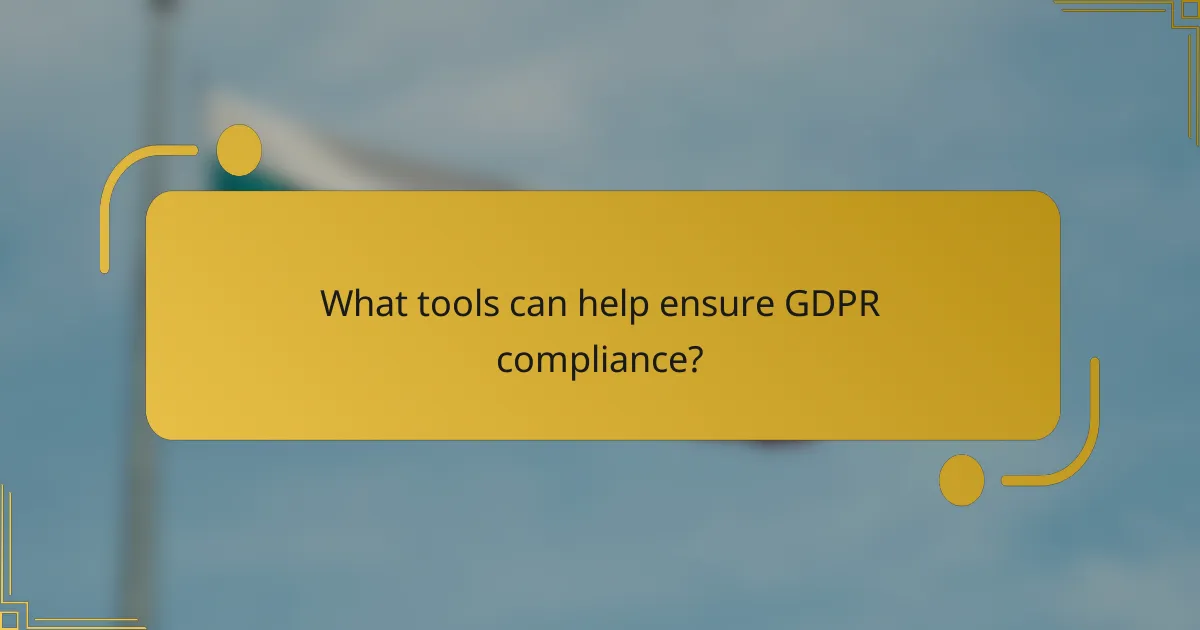
What tools can help ensure GDPR compliance?
Several tools can assist businesses in achieving GDPR compliance, particularly in email marketing. These tools help manage consent, protect user data, and ensure transparency in communication.
Mailchimp GDPR compliance features
Mailchimp offers various features designed to help users comply with GDPR regulations. It includes customizable signup forms that allow users to obtain explicit consent from subscribers, ensuring that they understand what they are signing up for.
Additionally, Mailchimp provides tools for managing subscriber preferences and data. Users can easily access their data and request deletion, which aligns with GDPR’s right to erasure. Regular audits of email lists can help maintain compliance and ensure that only consenting individuals receive communications.
ActiveCampaign consent management
ActiveCampaign includes robust consent management features that help businesses track and manage user consent effectively. Users can create forms that clearly state how data will be used, allowing for transparent communication with subscribers.
Moreover, ActiveCampaign allows for easy segmentation of contacts based on consent status. This ensures that only those who have opted in receive marketing emails, minimizing the risk of non-compliance. Regularly reviewing consent records is a best practice to maintain compliance.
HubSpot privacy tools
HubSpot offers a suite of privacy tools designed to facilitate GDPR compliance. Its features include cookie tracking management and customizable privacy policies that can be easily integrated into websites and email campaigns.
HubSpot also provides contact management capabilities that allow users to track consent and manage data requests efficiently. This ensures that businesses can respond promptly to user inquiries regarding their data, reinforcing trust and compliance with GDPR standards.

What are the common pitfalls in GDPR compliance for email marketers?
Email marketers often face significant challenges in achieving GDPR compliance, which can lead to costly mistakes. Common pitfalls include misunderstanding consent requirements, failing to provide clear opt-out options, and neglecting data protection principles.
Assuming implied consent is sufficient
Many email marketers mistakenly believe that implied consent, such as a user’s previous interactions, is adequate for GDPR compliance. However, GDPR mandates explicit consent, meaning users must actively agree to receive marketing communications.
To avoid this pitfall, always ensure that consent is obtained through clear, affirmative actions, such as checking a box during sign-up. This not only aligns with GDPR requirements but also builds trust with your audience.
Consider using double opt-in methods, where users confirm their subscription through a follow-up email. This practice not only secures explicit consent but also helps maintain a clean and engaged email list.
